An essay outline can be described as a guide or roadmap for an essay. It highlights the content that should be addressed in the essay and in the order in which this information should follow. The main idea to be discussed in the essay dictates what is to be included in the outline.
When writing a research paper/essay, capturing all the relevant information and relaying it in a logical sequence is something that every writer wishes to achieve. It is this factor that necessitates an essay outline. An outline can be used in the following essays; argumentative, cogent, persuasive, research, and expository essays.
Free Essay Outline Templates
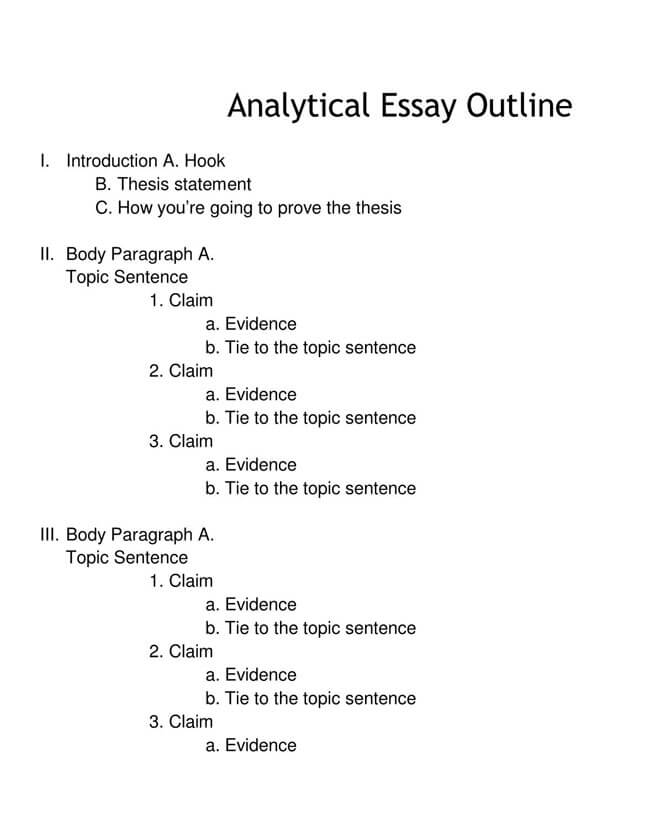
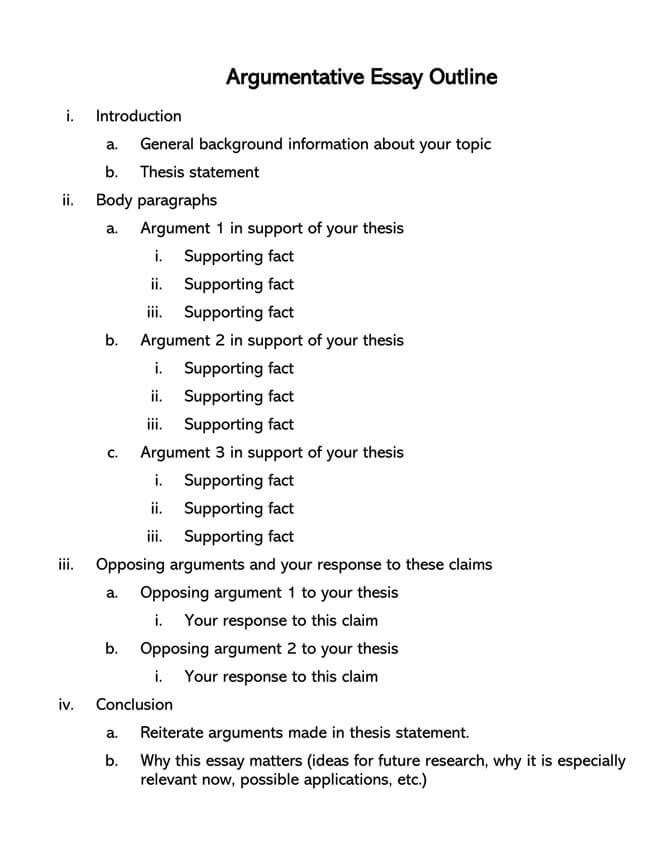
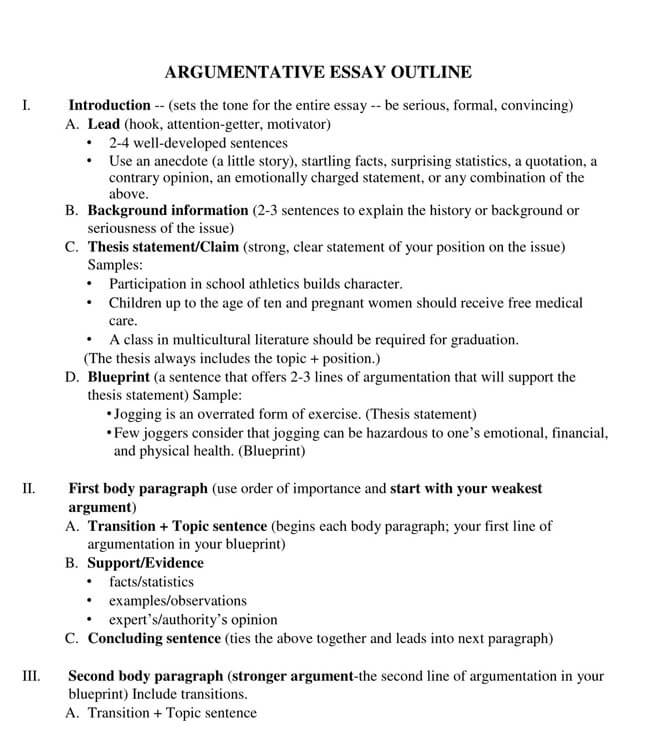
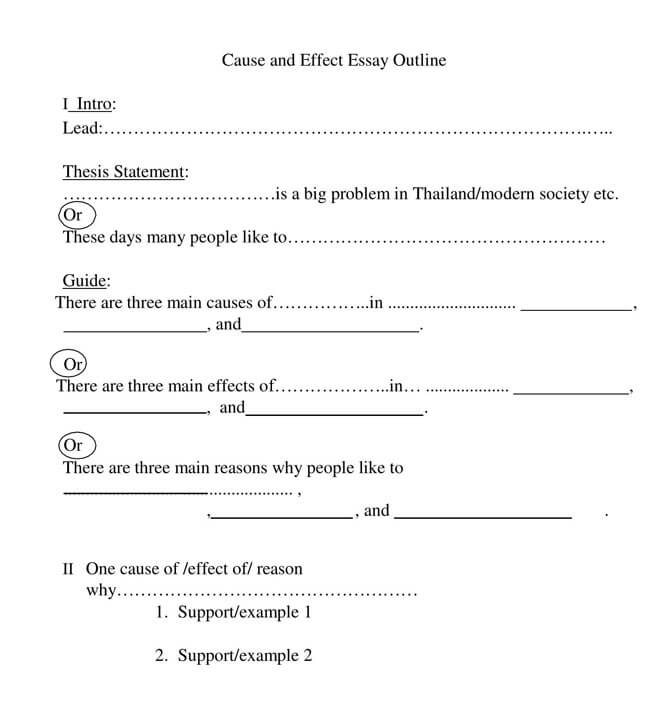
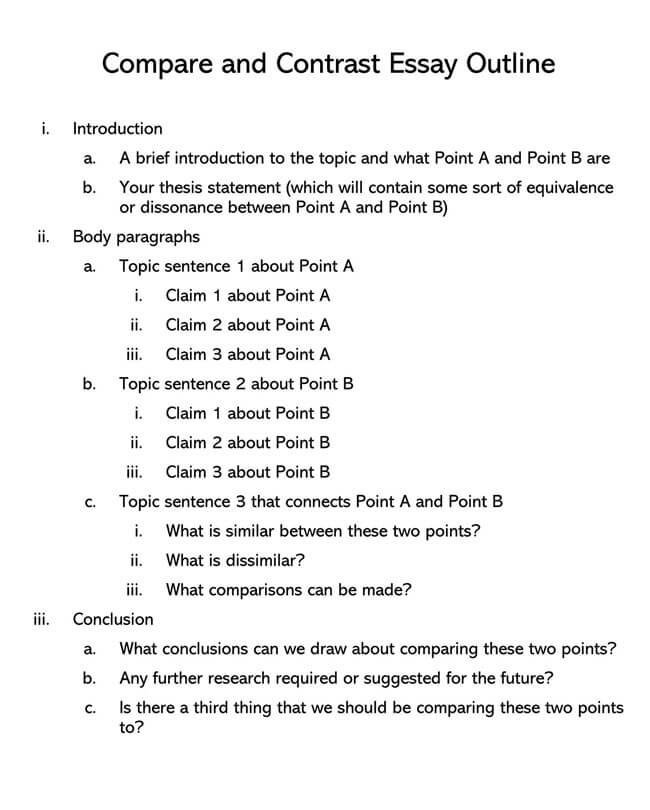
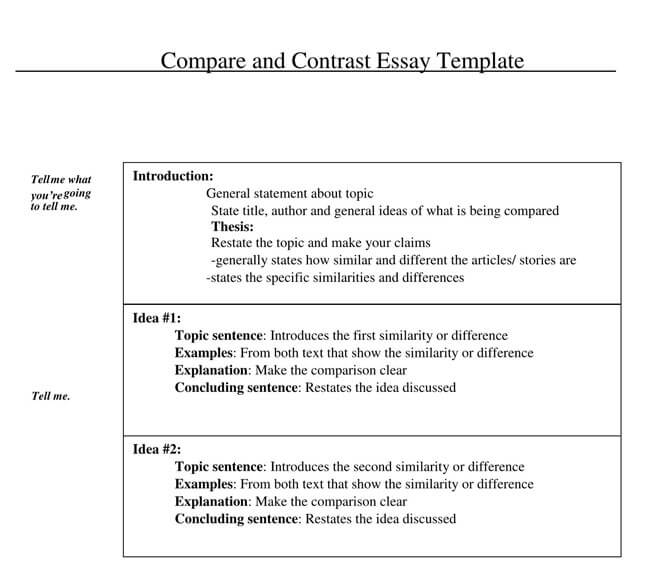
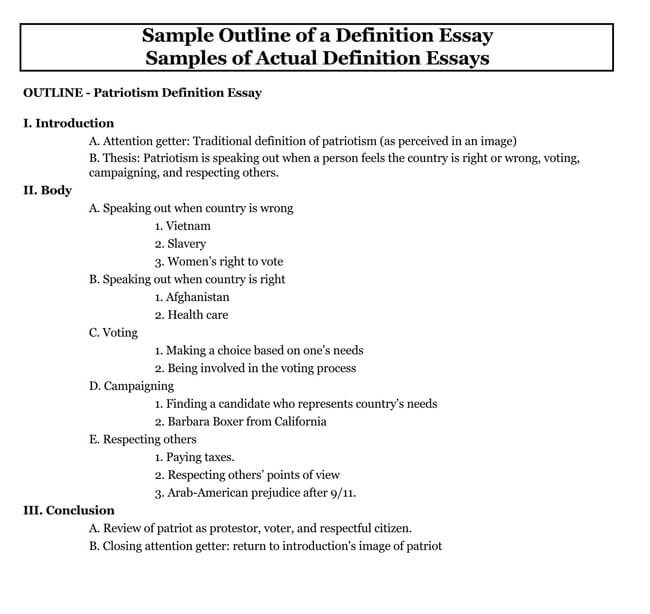
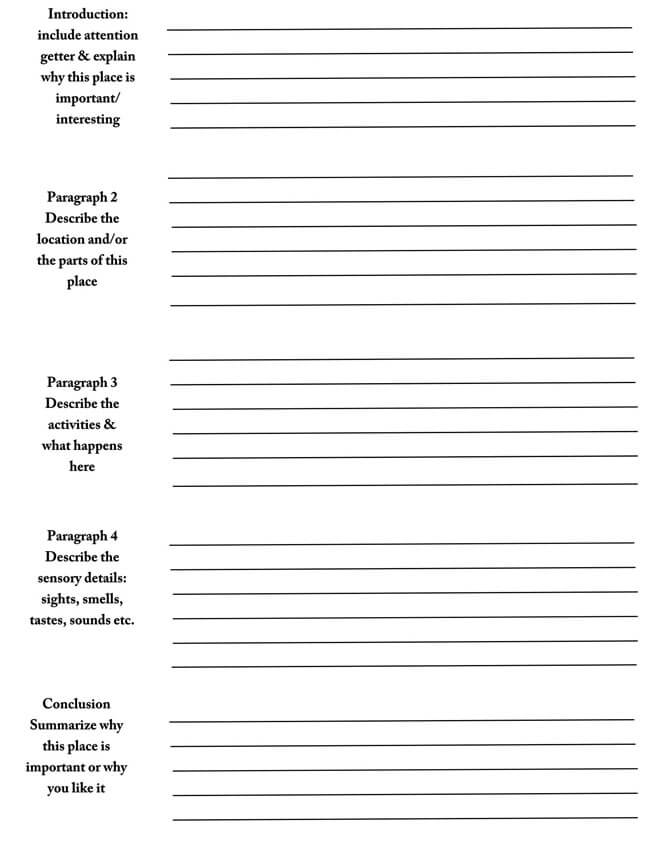
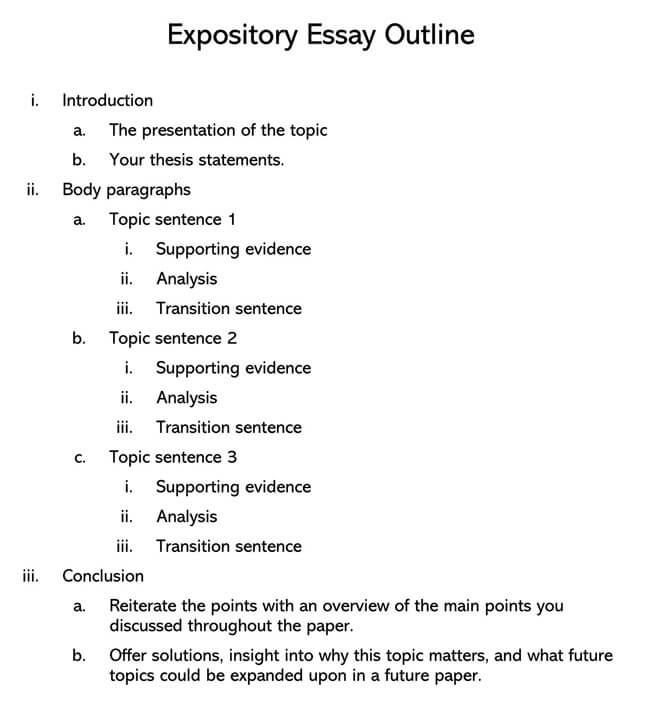
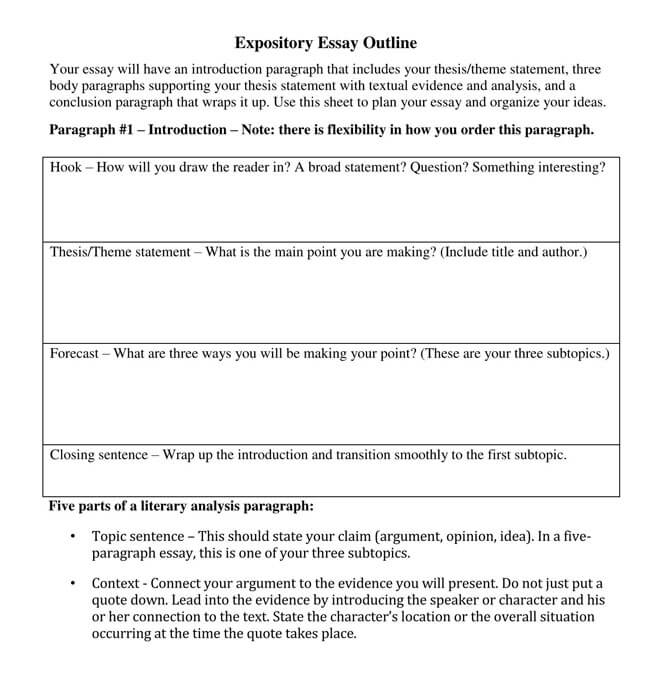
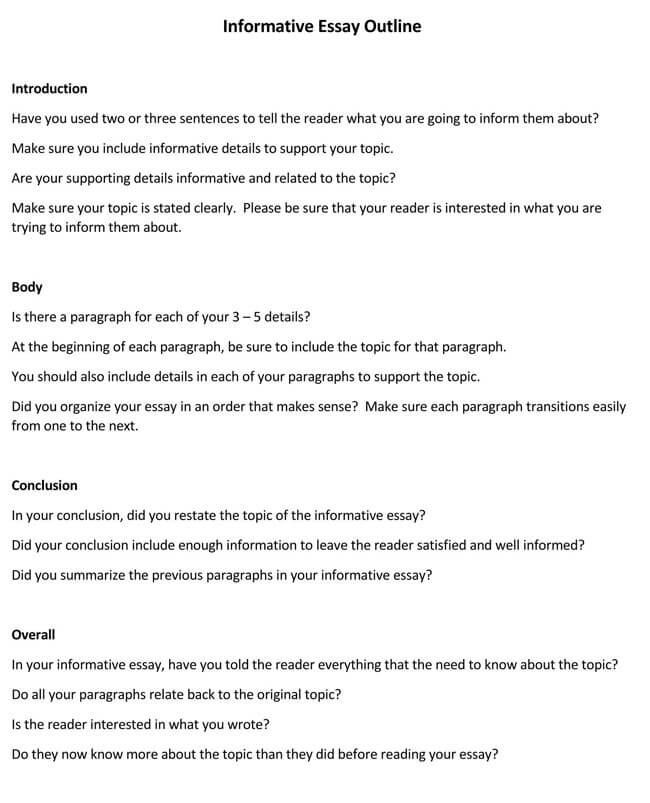
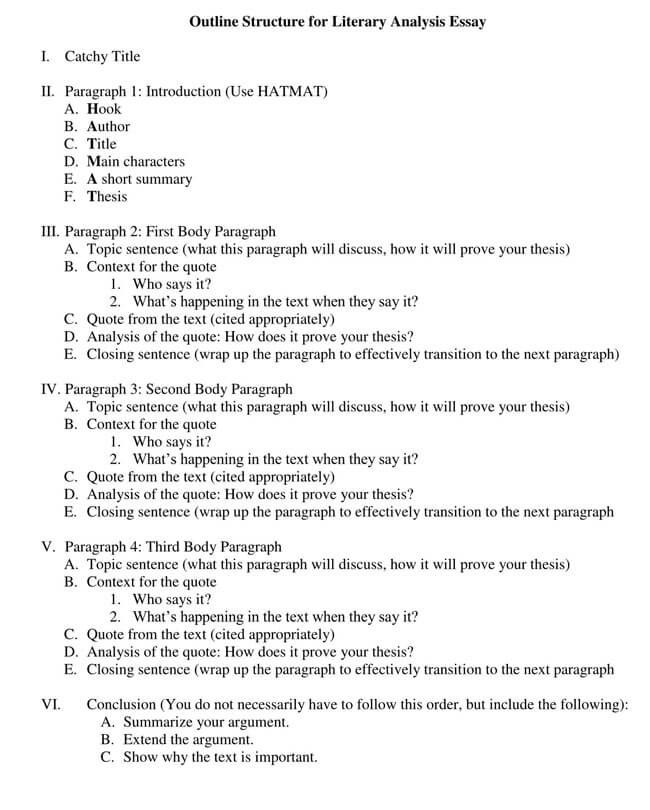
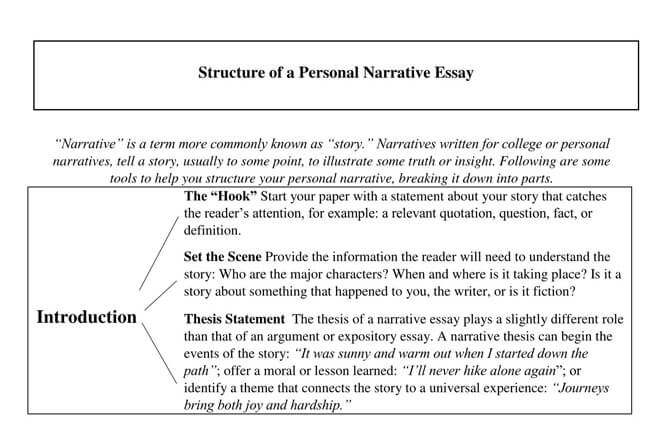
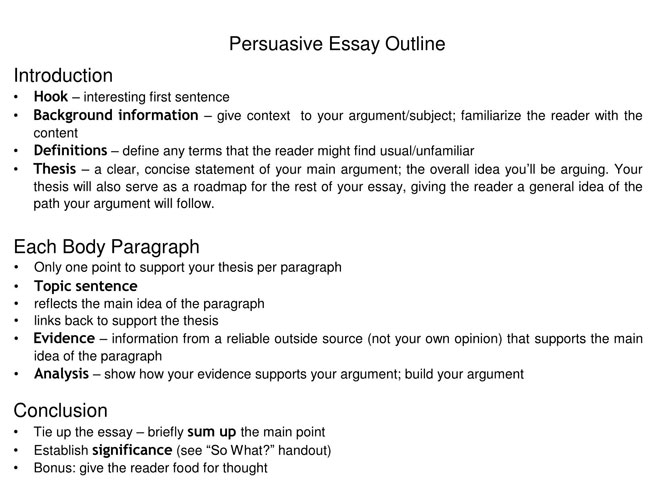
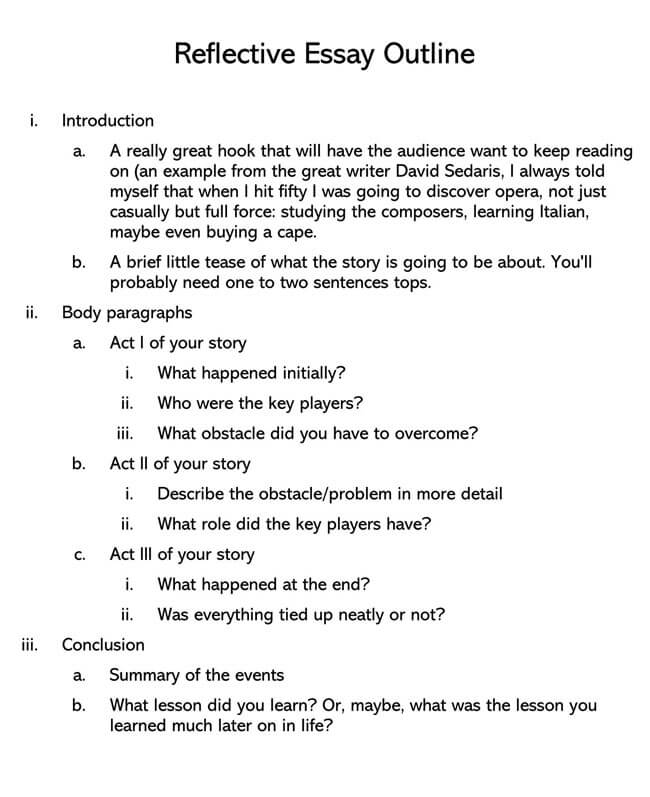
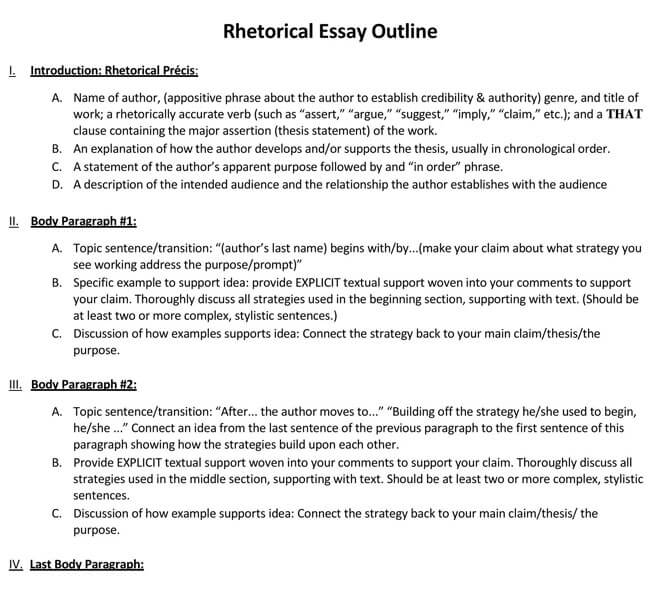
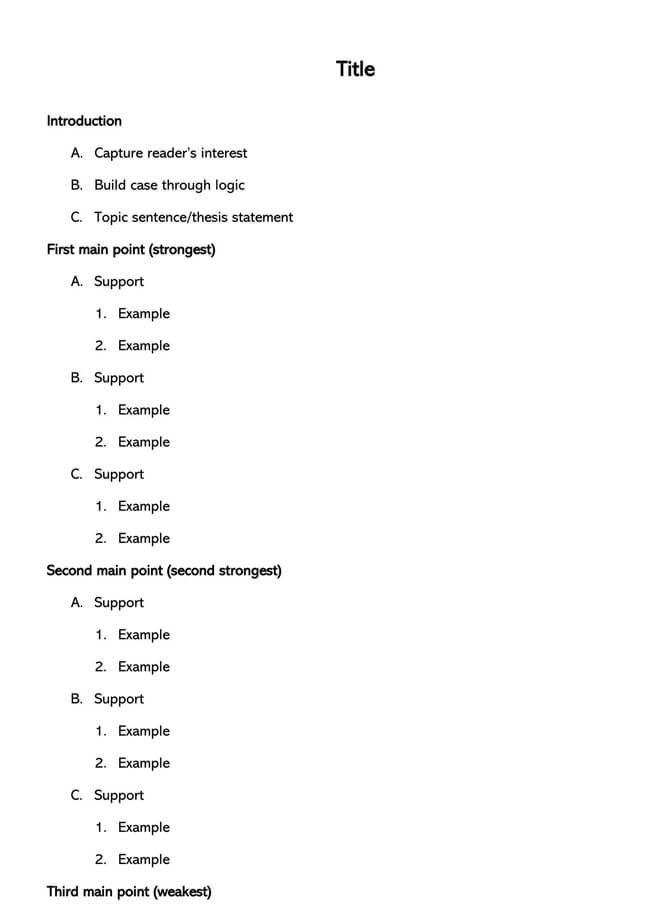
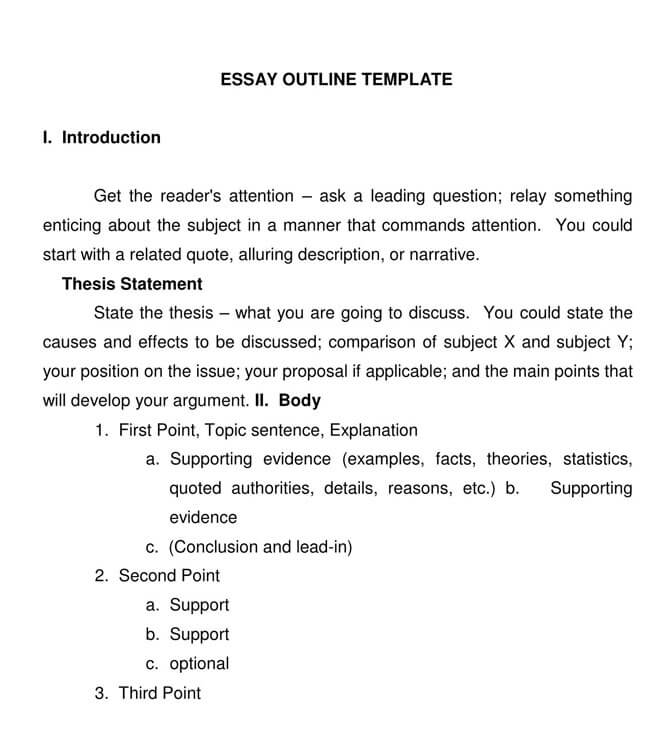
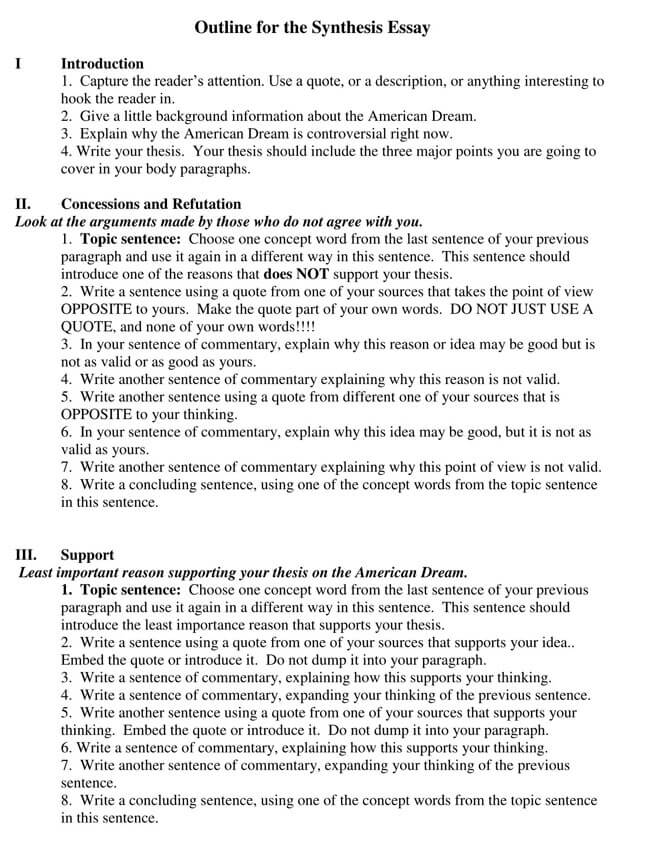
Benefits of Writing an Essay Outline
Essays can be written as part of the coursework, scholarship, or competition. Now that we have established what an essay outline is, we shall discuss the essence of having an essay outline and how it helps the quality of your essay, regardless of its purpose.
Here are the benefits you can expect from using an outline when writing an essay:
Organized research
Research is usually the first step in coming up with an essay. A well-researched essay improves the quality and quantity of an essay. How does an essay outline organizing your research? It primarily helps gather all the relevant points of your research from different sources in a commonplace. Once the points are consolidated, you can be able to sort out where in the essay each point will be perfectly placed. Depending on the information you have been able to collect, you can test the strength of your thesis statement. Essays whose outline you have been able to include a lot of points or information means you are conversant with their thesis statement and vice versa.
Provides logical flow
In an essay outline, the points are outlined in an alphanumeric format. This helps you to take note of the key points and sub-points. When the points are arranged in such a manner, as you write your essay, you can now have a guide for a clear flow of thoughts. The various alphanumeric formats include Roman numerals, bullets, capital, and lowercase numbers, etc.
Helps to form structure
Since the points are arranged in such a way that the topic being discussed will be tackled, you can use the outline to develop the structure you want your essay to adopt. This is in terms of the introduction, description, body, and summary. You can even decide to categorize your points in sections such as the beginning, body, and end.
Aids in not missing anything
If you record the key points of your essay while noting them down in your outline as you research, you are able to avoid missing any relevant information that would have otherwise been forgotten if kept to memory. This way, you have the freedom to do as much research as you wish.
Provides flexibility
In an outline, you are allowed to use full sentences or shorthand notes. Whichever way you choose to write your outline is totally dependent on you. This flexibility allows you to rearrange points, insert or exclude points as you see convenient.
From that information, you can see that the benefits are limitless and why an essay outline could be just what you need to excellently draft your essay.
Essay Outline Format
The customary format for essay outlines is the linear style which involves the ranking of arguments in order of importance, starting with the major to the minor ones. That should be the general outlook of the outline; however, when it comes to documenting the arguments or points, you can write them down in whichever way is most suitable and comprehensive for you. The points should be visually clear to help in identifying cases of repetition/redundancy.
It is also good to write the outline from the perspective that there are readers who are not familiar with your subject matter. As much as the outline should be brief, it should be a representation of complete thoughts and ideas. Writing your points in a logical order would go a long way in achieving this-making the essay outline reader-friendly.
Essay Outline Templates (by Types)
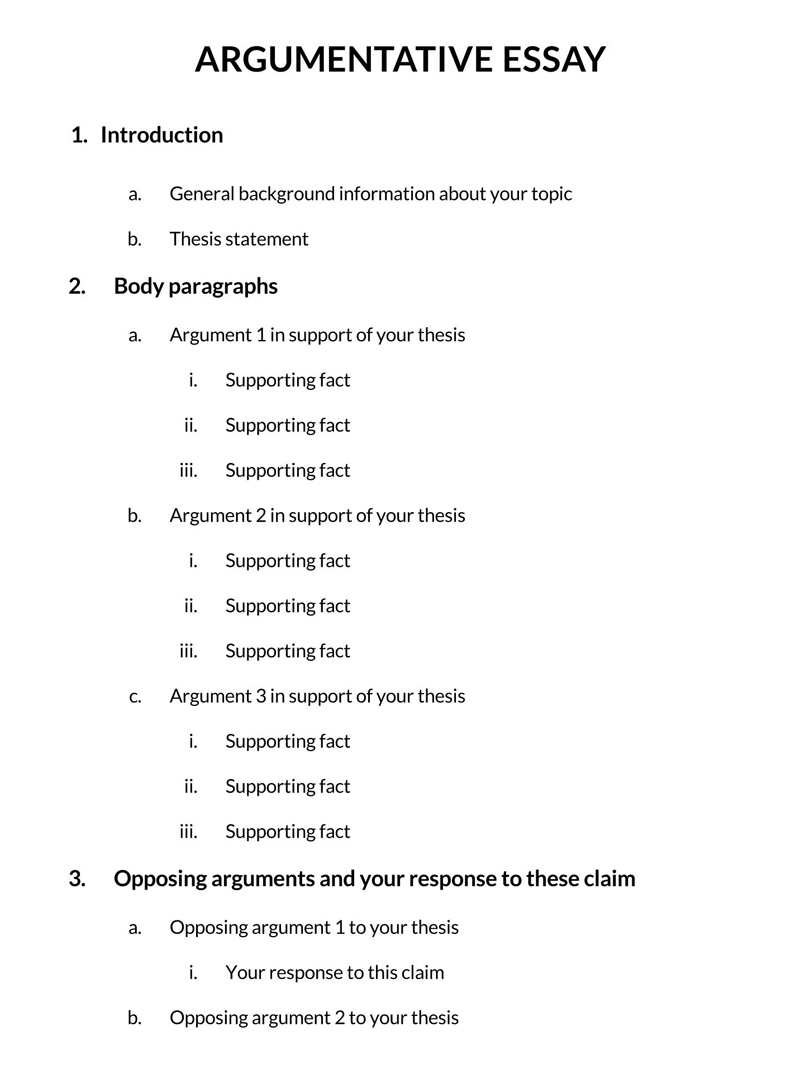
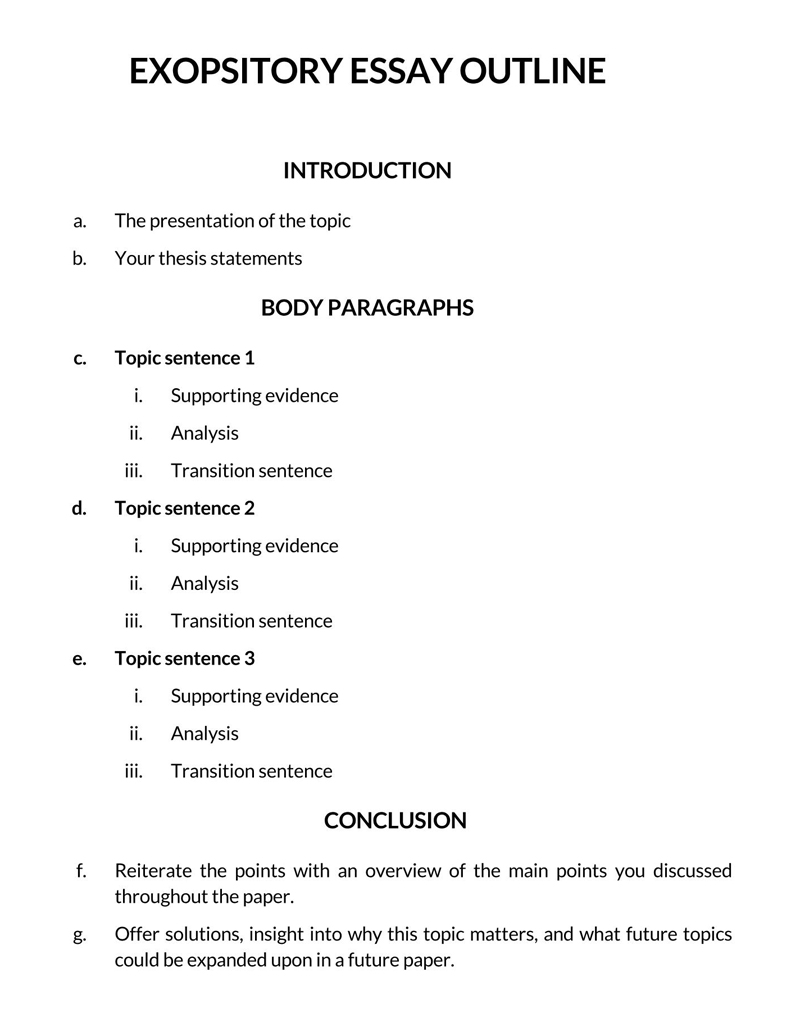
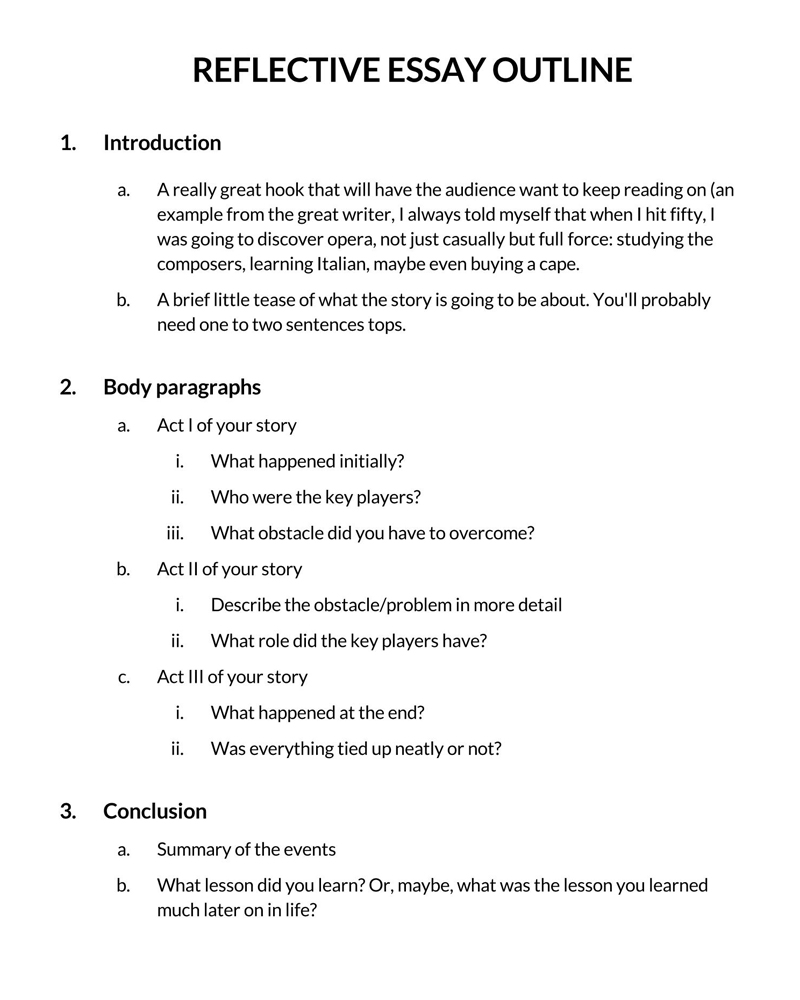
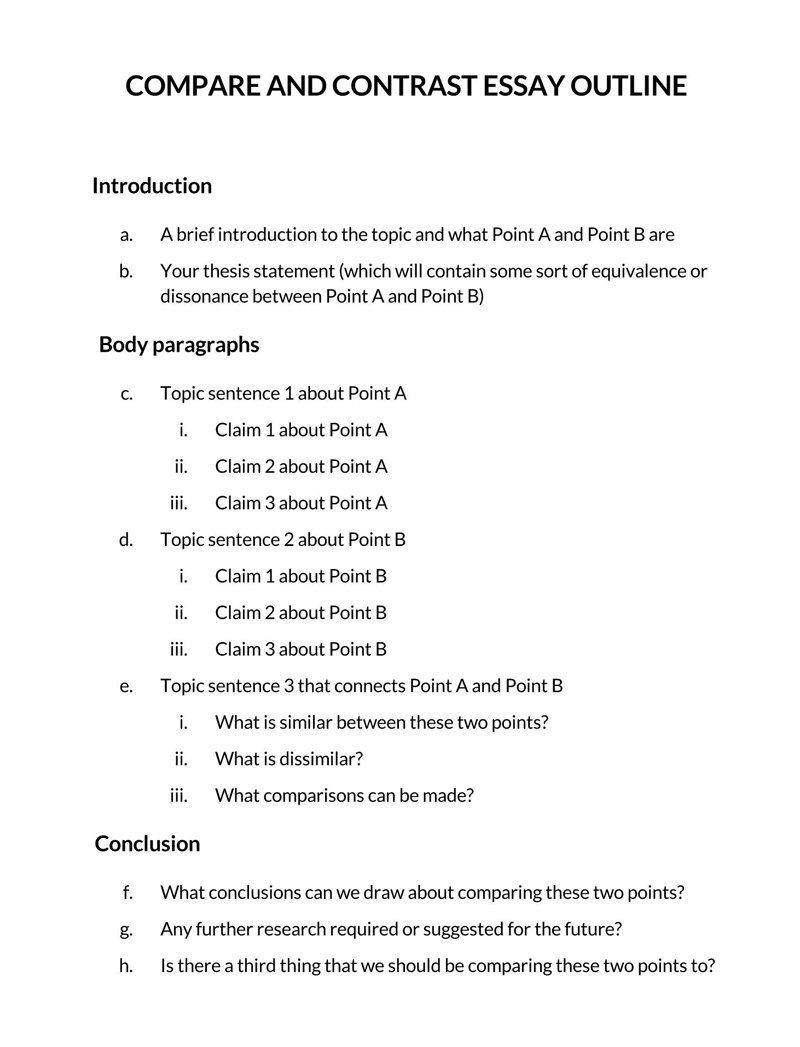
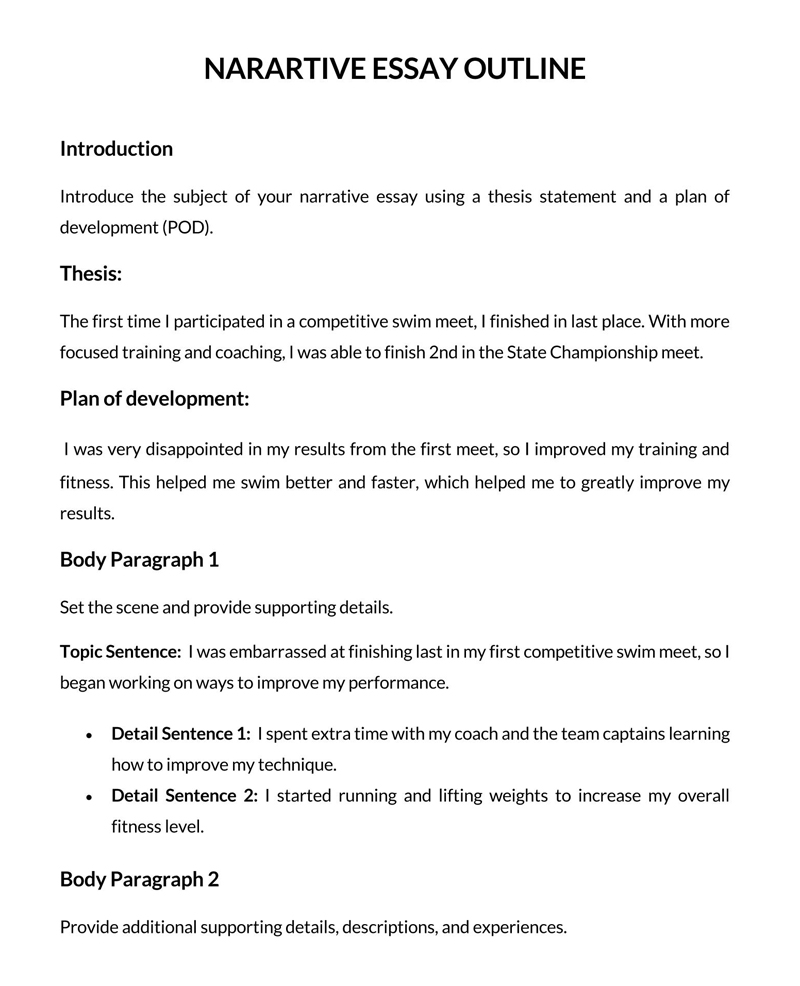
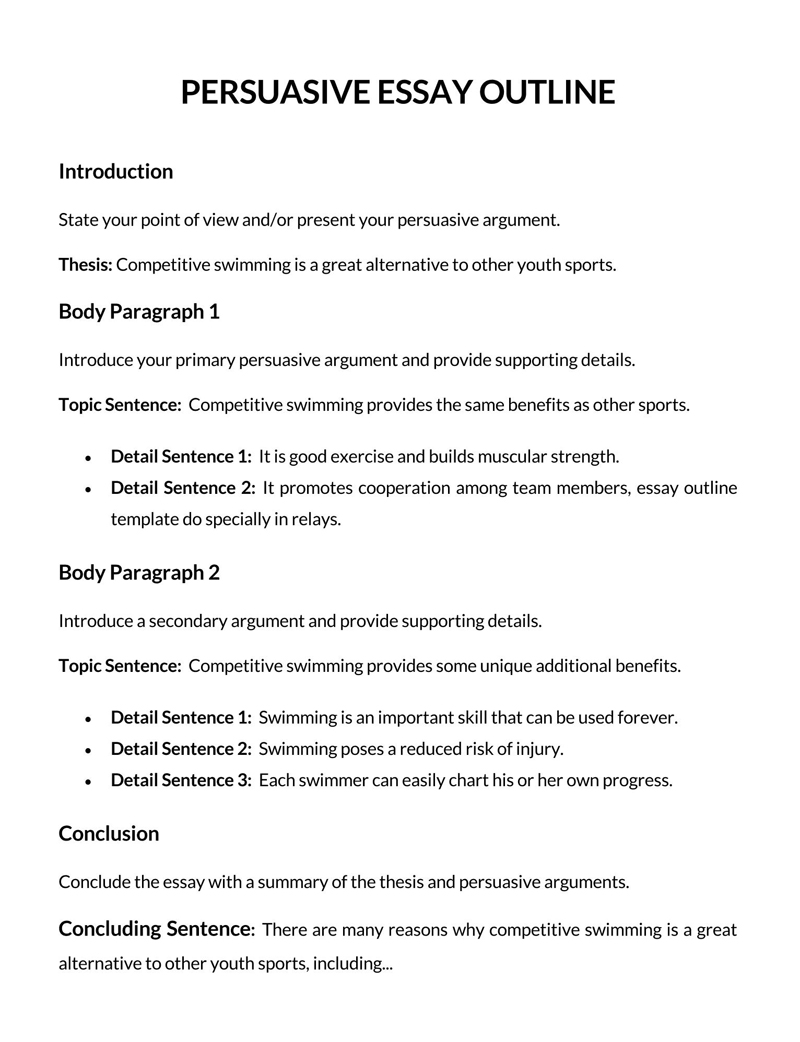
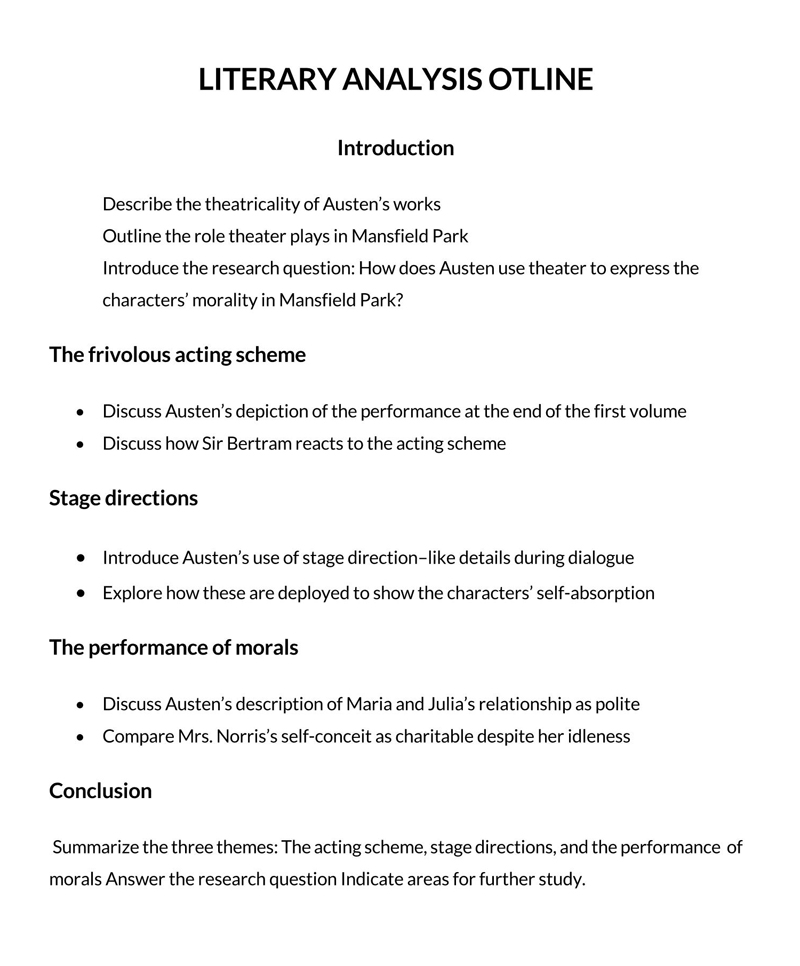
What to Include in an Essay Outline
Despite the fact that there are many types of essays, they all have the same elements that should appear in a standard essay outline. Now let us get into details about what you will include in your outline:
Introduction
The introduction will be the first item you tackle in your outline. The topic is introduced by mentioning it, usually your essay title, and giving a thesis statement. A thesis statement is a sentence given in an academic paper (essay outline in this case) that elucidates the main point of the text. Therefore an introduction can be done in the following steps;
- Introduce the topic
- Explain the thesis
Once this has been done, any reader would be able to know what will be discussed in the outline and the essay eventually. This can be your point of reference during research to ensure you stay on topic.
Body paragraphs
In an essay outline, the body typically has three paragraphs. Each paragraph has its own should have its own argument that relates to the topic at hand and must contain data, facts, examples, and any other evidence that can be used in support of the topic sentence/argument of the specific paragraph. To put this into perspective, here is how you can go about it:
- The first item to be included should be the first argument/topic sentence. This is then followed by data that supports the claim. Data should be factual, and one can cite examples that are in favor of the argument. To wind up the paragraph, the author should provide an explanation that relates the argument to the thesis.
- The procedure for paragraph two is the same as the one used in paragraph one. The difference being that a second argument is raised, and supporting evidence, data and examples accompanied by a relationship between the argument and the thesis are given.
- Follow the same procedure used in paragraph one but use a different argument in this case. Include this argument’s supporting evidence, data, facts, examples, and explain how it relates to the thesis.
Conclusion
This is the last part of your outline, and it is used to sum up, what was discussed or pointed out earlier in the outline. Now how to sum up; you can do so by doing the following;
- Conclude everything- this is where you make your final thoughts and highlight the key points of imminent importance to the topic.
- Restate your thesis
- Add call of action ( if you want to)– this is a statement that points out what you would like your readers to do after reading your essay.
Once all these sections have been covered, you should have a complete essay outline.
How to Write an Essay Outline
We have already discussed what and how to format an essay outline, but now the question still remains, what procedure or process is there to follow? From pre-writing to finalizing the outline. Sometimes professors can request to have your outline so they can go through and check the strength of your arguments before you proceed to write your essay, hence, the need to understand the process of crafting an informative outline.
Here are the tasks you carry out throughout the whole process:
Pre-writing checklist
The first thing that you want to do is have a clear understanding of what is required from your assignment in terms of the type of essay, the number of arguments expected, and your essay’s length. In short, understand the guidelines provided.
Once you are familiar with the instructions guiding you, get to know the purpose of the essay. Do you want it to inform, persuade or entertain your readers? Determining the purpose helps you distinguish the thesis and the writing technique to use. It also defines the extent of your research.
Another pre-writing task is to identify your audience. The audience could range from teachers, students, strangers, etc. By knowing your audience, you can determine what arguments to include and how to relay them.
Essay structure
Now that you are familiar with the thesis, topic, and the guidelines you have been given to follow, it is time to decide how you want the various parts of your outline will combine to produce a full outline. Choose what alphanumeric format you wish to use to outline your arguments or points. Note that you can also use a decimal structure. You can use shorthand points or complete sentences when noting down your points. However, outlines to be submitted to professors should be of complete sentences-more comprehensive to someone else other than you.
Organizing the outline
Of all the sections of an outline, it goes without saying that you should always start with the introduction. Make it as engaging and captivating as possible. You do not want to bore the reader before they get to the main points. When it comes to the body, ensure that each paragraph has its own topic sentence and supporting evidence. Collect as much information as possible; this makes it easier to create flow. Include a transitioning sentence after every paragraph. Finally, conclude by stating the relevance of your thesis, and if you have propositions you would wish to make, write them down.
Essay Outline Examples
Just as there are different categories of essays, so do essay outlines. Essay outlines can be classified depending on the type of essay to be written.
Some of the examples include;
Persuasive essay outline
A persuasive essay is one that the author aims to use logic and arguments in an effort to convince his or her reader(s) of the validity of their point of view. Factual evidence should be given together with solid evidence, examples, research, and any other proof.
Persuasive essay outline example
Topic: Why music has the power to heal
Introduction
Thesis: music is a universal language.
Body paragraph 1
Topic sentence: Music uplifts people’s moods and purpose to live.
Detail: Listening to music calms people’s nerves
Detail 2: People see a reflection of themselves in musicians.
Body paragraph 2
Topic sentence: Music is considered food for the soul.
Detail: Music is used during meditation
Detail 2: Music is incorporated in workout routines.
Body paragraph 3
Topic sentence: There is music for almost every scenario.
Detail: There are songs for happy and sad moments.
Detail 2: Music is a reassuring tool.
Conclusion
Music can be a good morale booster which is important when dealing with mental health-related problems such as depression.
Narrative essay outline
A narrative essay/paper is one that tells a story by basing or revolving all the incidents, experiences, and characters around a single character, in this case, you. It is based on your personal experience or told from your point of view and gives intrinsic details whose aim is to make the reader(s) understand your point.
Narrative essay outline example
Topic: How campus improved my social skills and network
Introduction
Thesis: Other than equipping me with education, the campus was an opportunity for me to socialize.
Body paragraph 1
Topic sentence: I was a member of various clubs in the school
Detail: Interacted with like-minded people, which improved me as a person.
Detail 2: Opened scholarship opportunities through athletics.
Body paragraph 2
Topic sentence: campus gave me connections within and without my career.
Detail: Made friends from different departments.
Detail 2: Interactions equipped me with communication skills that made it easier for me to express myself.
Body paragraph 3
Topic sentence: Attended social events.
Detail: It made my time in school more exciting.
Detail 2: Excelled in academics as school felt worth being there.
Conclusion
The campus is a place to expand your social network as you continue your studies.
Expository essay outline
An expository essay is an academic essay that requires the author to investigate a topic or idea by evaluating available evidence and expounding on that topic so that they can relay their findings/argument to the reader.
Expository essay outline example
Topic: Why practice makes perfect in art and sport
Introduction
Thesis: Abilities and talents require hard work.
Body paragraph 1
Topic sentence: Excelling in art and sports do not come overnight.
Detail: The path to Christiano Ronaldo’s success.
Detail 2: Examine the career of Beyonce.
Body paragraph 2
Topic sentence: Quality of art improves of delivering in art improves with time.
Detail: Analyze the variations in price value of art pieces.
Detail 2: Analyze the statistics of Lebron James as a rookie and in his prime.
Conclusion
To excel in your art or sport, you have to put in many hours, but it is rewarding.
Research essay outline
A research essay is an academic essay that requires the author to study and analyze the works of others and then synthesize what they learned from them with their own ideas. It gives the author’s perception of the topic discussed.
Research essay outline example
Topic: Nelson Mandela
Introduction
Background
Thesis: Nelson Mandela was influential in giving South Africa independence, a role model, and a president.
Body paragraph 1
Topic sentence: Mandela’s childhood.
Detail: Family
Detail 2: Characteristics
Body paragraph 2
Topic sentence: Mandela in college and his political career.
Detail: Mandela’s participation in politics while in college.
Detail 2: Mandela arrested.
Body paragraph 3
Topic sentence: Mandela activism and legacy.
Detail: Programs he was involved in.
Detail 2: Mandela immortalized.
Conclusion
Summary of his achievements, such as the Nobel Peace Prize.
FAQs
An essay outline should be no more than a few pages; this will, however, depend on the information you choose to include.
The APA format is the most common as it is easy and convenient for a wide range of essays.
Final Words
An essay outline is important before you write an essay. It keeps you on track as a guide to the content and format you should follow in your essay. An outline will ordinarily have the following sections; introduction, body, and conclusion. Always try to cover all of these sections. In an outline can choose to use complete sentences or bullet points in listing the information you deem relevant to your topic. Remember, the first step of writing an outline is understanding your topic and assignment. This you know where to start and the format best to adopt. Incorporate as much information as possible while keeping it concise—all the best in your essay.




